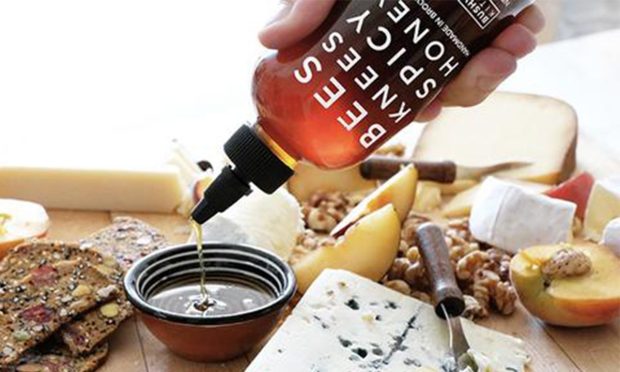Easing Supply Chain Woes With Strong Vendor Relationships

For direct-to-consumer (D2C) food businesses, any point of friction that inhibits the shopping journey could mean the difference between making and losing the sale. Consequently, consumer-facing eCommerce has evolved leaps and bounds in recent months, with the purchasing process often as easy as just clicking the “buy now” button — and PYMNTS data finds that these buttons can cut the purchasing time in half, down to under 90 seconds.
See also: Just Press Buy: Buy Buttons Impact Retail Performance During Q4
However, on the B2B side, the evolution of the commerce journey has been much slower. In fact, many vendors along the food supply chain are only just now starting to move their payment systems from pen-and-paper to digital systems.
“There’s a lot of movement toward online. I think that if I were to take a rough split, less than 10% of our retailers or vendors were interested in paying that way [in the past],” Daniel Doll, CEO of D2C sauce and packaged foods brand Bushwick Kitchen, told PYMNTS in an interview. “Now we’re setting up retailers directly, where they can just log onto our site [and] check out like they normally would if they were a consumer buying products … I think there’s a lot of a lot more willingness to set it up that way versus even a few years ago.”
Doll noted that the rise of Amazon has made it nearly impossible for businesses to compete without offering an easy, frictionless buying experience. For B2B transactions, however, no such industry-wide shift has demanded the same kind of evolution.
Bushwick Kitchen began in 2014 with a $5,000 personal loan selling hot sauces, launching within 30 days. It has since expanded to offer additional sauces and condiments, as well as gift sets and pancake and waffle mix. Doll joined the company in 2018.
Let’s Get Digital
While this shift toward online payments is a huge first step, the process remains largely disjointed, making space for solution providers that could integrate the disparate parts.
“There’s a lot of fragmented payment systems, where if you have 100 vendors or 100 retailers, they might use 10 different systems,” explained Doll. “But I think someone who can figure out the unification of those systems has a really big market opportunity.”
And it’s not only D2C food brands feeling this pressure. Across the food supply chain, the process is a bit of a mess — businesses that supply restaurants, for instance, are often left to deal with paper documents. This can be costly from a labor perspective at a time when there is a pressing shortage of workers.
“The problem on the distributor side is that their order desk is offline — they receive orders via email, text, phone, fax machines, carrier pigeons,” Jordan Huck, chief executive officer of restaurant supply chain technology company Notch, told PYMNTS in an interview in June. “So they have to have two or three people a week who just manually enter orders into their systems.”
Read more: Notch CEO Talks Taking Fax Machines out of the Restaurant Supply Chain
All in One
As Doll sees it, payments are not the only system that needs a single, unified solution. He noted that across operational processes, disparate technological programs that cannot communicate with one another keep systems from flowing smoothly, and integrating these systems is a time- and labor-intensive process.
“The integration piece is a bit of a challenge for us — getting all of our systems to talk together,” said Doll. “And it’s not necessarily a manual process, but it’s one that requires heavy oversight from the team, and can sometimes get bogged down in the systems.”
He noted that coordinating commerce tools with bookkeeping tools can take a long time, requiring after-hours work, and that the company’s existing solutions have failed to meet Bushwick Kitchen’s needs.
Keeping the Faith
Across every stage of the food supply chain, shortages are crippling businesses’ ability to function at full capacity. These shortages demand that food brands find solutions that allow them to get smarter about their buying, being more deliberate about obtaining ingredients and packaging materials.
As IGA President and CEO John Ross told PYMNTS in a recent interview, “There’s a constriction of supply that’s very deep, everything from raw materials like aluminum, printing capacity and labels to things like imported goods.”
Related news: From COVID to Product Shortages to Labor Supply, Grocery Stores Adapt to String of Challenges
One factor that has been helpful in allowing Bushwick Kitchen to weather these supply chain constraints is its “great, open communication with [its] partners,” Doll said. With these strong relationships, suppliers are more likely to “stick their neck out” for the company, allowing Bushwick Kitchen to buy ahead on faith that the company will come through.
Additionally, to handle these challenges, Bushwick Kitchen has been getting increasingly exacting about how it purchases the foods and supplies it needs. “[We’re] trying to get smart about looking at past performance as an indicator of future performance,” Doll said. “So I think open communication and being creative in creating supply chain redundancies would be the top [factors].”
